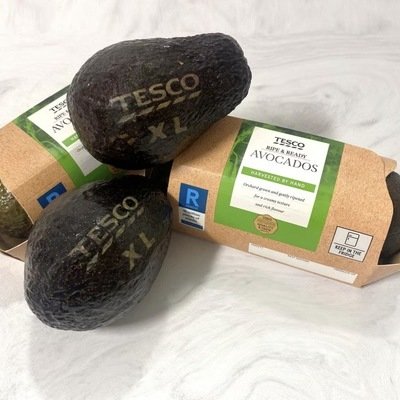- 16 Posts
- 23 Comments

 1·2 months ago
1·2 months agoSure. I recently bought an electric portable fabric cleaner (e.g. spot cleaner for carpets). I needed to see reviews between different brands such as Bissell, Shark, and what have you. Of course, Amazon has these reviews but they are often astroturfed (and that’s the case on Reddit too, but less so one hopes).
So basically, making a big purchase like that is important and I want to due my diligence. I really like the idea of posting BAD reviews in buyitforlife. i.e. don’t buy it for life content. Not sure if that content is allowed there.

 3·2 months ago
3·2 months agoI’ve actually thought about making a community like that… It’s one of the specific areas that Reddit still has an advantage.
Solarpunk magazine is a great place to start https://solarpunkmagazine.com/
 2·3 months ago
2·3 months agoCurrently reading:
Next up:
Here’s a Mac & Cheese adapted from https://www.noracooks.com/vegan-mac-and-cheese-recipe/
I use the cheese sauce for this meal or as a substitute for béchamel when making lasagna.
The Best Vegan Mac and Cheese
Prep Time: 10 mins | Cook Time: 10 mins | Servings: Servings: 8 servings
Ingredients
-
1 1/2 cups raw cashews
-
200 ml oat-based cooking cream
-
1 tbsp fresh lemon juice
-
1/2 cup nutritional yeast
-
1/4 teaspoon turmeric
-
1/2 teaspoon garlic powder
-
1 1/2 teaspoons salt
-
12 ounces elbow pasta
Optional breadcrumb topping
- 1 1/2 cups panko breadcrumbs
- 4 tablespoons vegan butter/margarine, melted
- 1/4 teaspoon smoked paprika
Directions: Preheat oven and prep – If planning on baking it with the breadcrumb topping, preheat the oven to 350 degrees F and lightly grease a casserole dish (I used a 9×13 inch dish). Skip this step for stovetop mac and cheese. Soak the cashews – Soften your cashews by covering them in boiling water for 5 minutes. I do this by heating up water in my tea kettle, and then pouring the boiling water over the cashews in a large glass measuring cup. Cook pasta – Cook the pasta according to package instructions, but do not overcook. Drain and set aside. Blend cheese sauce – Drain the soaked cashews and discard the soaking water. Add the cashews, fresh water, lemon juice, nutritional yeast, turmeric, garlic powder, salt and bag of shredded cheese (if using) to a high powered blender and blend until very smooth.
Stovetop version Simply return the pasta to the pot and pour in the cheese sauce. Stir until the sauce thickens and serve immediately.
Baked version (the best!) Make the breadcrumb topping by mixing the breadcrumbs, melted vegan butter and smoked paprika in a small bowl until crumbly and moist. Add the drained pasta to the prepared casserole dish, and pour in the cheese sauce. Stir to coat the noodles. Sprinkle the breadcrumb mixture on the pasta and bake, uncovered for 15 minutes. I also broiled it for a few minutes until golden brown. Serve immediately and enjoy!
-

 12·3 months ago
12·3 months agoThe 2025 and 2040 colors are definitely identifiable as separate colors…

 41·3 months ago
41·3 months agoCheck out [email protected] if you are passionate about this!
I cannot find the reference now, but I remember reading about favelas and how they are designed with courtyards so that there can be a shared responsibility of childcare.
The other thing that jumps to mind is dorms for students in the US which have a very similar coliving feel. I believe the Dutch and some Nordic countries were also collocating the elderly into similar areas to create a mixed generation encampment.
Here’s a transcription:
00:04 The 15-minute city is something that we talk a bit about on this program. You might, if you’re interested in the idea, check out the ABC Listen app for a chat we had with Carlos Moreno, the guy who made the idea popular in this recent period. And it’s an idea which is gaining great traction. Simply put, our urban environment should be designed so that everything we need day to day is within a 15-minute walk or bike ride.
00:34 How good would that be? Imagine it, schools, groceries, healthcare, you name it. And we often think that the benefits of this would be, well, things like reduced pollution, boost the local economy, community, and maybe just a sense of simple ease and happiness. My guest today puts another element to that. She argues that the 15-minute cities will have a major impact that people don’t talk a lot about.
01:04 an impact that would affect around 50% of the population and in a positive manner. Stephanie Patolo is an associate at Springboard Policy. It’s a public policy research and advisory firm in Canada. She argues that 15-minute cities would be a huge boon to women. Stephanie, welcome. Thank you so much. What makes an urban space
01:31 good for women in broad terms without bringing the 15-minute city into it? What elements are we talking about, do you think? Yeah, I think safety is definitely a big one for women. Women want to feel safe in their communities, not to bring in the 15-minute cities already, but that it’s suited towards how women interact with cities, so how they move around cities. They’re less likely to use cars. They’re more likely to be making frequent trips
02:01 trips with more stops. And I think affordability is another big one for women. It’s interesting that idea of people keeping an eye on each other, because of course, 15 minute cities as we know are part of the culture wars that their detractors, and this is fairly conspiracy theory country, but their detractors see the 15 minute city as a means of state surveillance of keeping us in one spot where we can be kept an eye on.
02:31 I mean, that is fanciful. And yet, here you are talking of the benefits of that kind of more socially gentle and constructive, I guess, I’m gonna use the word surveillance, but it’s the wrong one. Of community contact, I guess, is a better way of putting it. Yeah, and I guess it’s like less surveillance and more just community and watching out for each other, which I think a lot of people do value in a community.
02:59 And maybe they don’t want people unknowingly watching them, but I think everyone can agree that they want to feel like they’re part of a community and connected with other people. So the 15 minute city, I mean, that’s, yes, as you say, that ticks a lot. Instantly you can see that it would tick a lot of those boxes. I mean, the safety aspect is a really interesting one. Is this because of that sense of community that might grow if we were?
03:28 more 15 minute connected? Yeah, definitely the sense of community. When you’re living in a 15 minute city, more people are out and about, you’re more likely to get to know your neighbours, and you’re also more likely to have eyes on the street, which is a Jane Jacobs concept, which means that more people are looking out for you when you’re interacting with the community. So when women are walking on the street, maybe late at night.
03:53 and there’s more people around, they feel safer, and they feel like there’s less likely that something bad will happen to them if they know their neighbors are keeping an eye out, whether that’s because they’re walking around or because they have their windows open, and they feel that there’s a community that will protect them. I mean, it’s such an interesting aspect of the idea that the creation of community and the opposite side of that is the way in which we work as perhaps commuters or people that…
04:22 just pop in and out of their homes at the top and tail of the day and see no one otherwise. Those things of modern, more distant work life, they are such anti-community aspects. I mean, it’s not a thing that’s talked about enough perhaps in the 15-minute city idea that it just creates that sense of village. Yeah, exactly. We see with especially suburbs that they were designed that you…
04:51 leave in the morning and you go to the big city to work and then you return at night. And they weren’t really designed to be places of community. They’re just designed to be places where you sleep at night or where you have a larger home that you can live with your independent family and you don’t really need to interact with people. But the 15 minute city concept really breaks that down to make sure that you have all your needs in one place and you can be interacting with your community at all times. What does it do for the gender pay gap?
05:19 I think it makes living in a city more affordable, especially for women, when they can choose not to own a car because they can easily move around a city without one. And cars are really biggest expense. In Canada, it’s the second biggest expense for families after housing. So when you’re able to reduce your transportation costs by either using transit or biking or walking all the time.
05:46 It makes it more affordable for women, especially women who don’t live with a partner, to be able to live in a city that are typically very expensive. We had cities now that have taken this idea on pretty seriously. I mean, Paris is perhaps one of the biggest examples where the mayor in Paris was elected specifically. This was part of her program to introduce this into that great world city, this idea of a 15-minute city. Other cities are taking this up as well?
06:16 There’s a number of cities that are incorporating it into their planning. Ottawa and Canada has done so along with Portland, Oregon, Stockholm also has incorporated the idea of a one minute city, so they’re taking it a step further. How do you do that? That might be a bit ambitious. I think it’s just making cities even denser.
06:39 I don’t know how that’s going exactly, but it’s something to keep an eye out for. I’m interested in the range of things you could find within one minute of your rather compressed Stockholm life. You work, medical care, food, it’s a lot to pack into one minute. Yeah, exactly. There is, though, implied in that, this is another aspect of the divide we see in a lot of our urban spaces between the inner and often gentrified.
07:09 central portions of cities which are resource rich in which that 15 minute Possibility is just part of the existence in those more inner city spaces as against the outer suburbs and the outer outer suburbs where The planning really hasn’t catered to this where the planning has assumed the mobility of the car. That’s definitely true It’s important that we’re not just focusing on city centers, but are expanding it
07:35 to suburbs, especially as more racialized and marginalized populations are pushed out into the suburbs because they’re becoming cheaper and there tends to be a migration of new immigrants to the suburbs. And it’s important that we continue to like provide those areas with more transit and more amenities there to make sure that they have a strong and rich communities in those neighborhoods too.
08:01 In the cities which are fairly progressed in the introduction of this as a thought, are we seeing that effect on change to aspects of women’s lives? Are we seeing that creation of feminist utopia in some of these places? I don’t know if anyone would call it a feminist utopia, but… We can dream, come on. We can dream. I think we are. I…
08:30 I guess there’s maybe not a lot of academic research to demonstrate that. There’s like one study that talks about for children who live in walkable neighborhoods, they’re more likely to make trips on their own, especially girls, and they’re able to become more independent. And that’s really important, especially for families and women who might have those caregiving responsibilities that their children are able to
08:59 at a reasonable age go out on their own and parents don’t have to drive them anywhere or everywhere that they need to get to. I can speak from my experiences too, living in a 15-minute city. I definitely feel safer in my neighborhood. I can afford to live in Toronto because I don’t need to own a car. There’s lots of parks. There’s lots of community here with restaurants and bars.
09:29 grocery stores and I’m pretty close to work and other places. So yeah, it’s been really great living in this community. Do you feel that enhanced sense of safety that you speak of? Yeah, I do. I do especially in my neighbourhood that has a lot of young families and I always feel like when I’m walking around at night there’s people walking their dogs or they’re out with their kids.
09:57 I do feel really safe and I never feel like I’m alone in my community and I know that there’s always someone who’s there looking out for me. Stephanie, thank you. Interesting ideas and as we’ve said, important to push these ideas into their intersectional possibilities as well as their ground theory. Thank you. Thank you so much for having me. Stephanie Batolo, Associate at Springboard Policy. It’s a Canadian policy research and advisory firm.
10:25 Find more great ABC RN stories that take you beyond the headlines on the ABC Listen app.

 4·4 months ago
4·4 months agoThis is as good as it gets I think!


 2·4 months ago
2·4 months agoThis is okay if you go UNDER (behind) our logo); however, I think the rainbow road will cause you problems

 2·4 months ago
2·4 months agoI think the gears need work. Other than that, it’s in good shape!

 3·4 months ago
3·4 months agoI’m going to outline the parts that overlay on your globe so that it’s clear where the demarcation should be.

 3·4 months ago
3·4 months agoSeems good,
BTW, I converted it to png here https://i.ibb.co/m5bd3B6/rtr-feature-1.png (valid for 10 minutes)

 1·4 months ago
1·4 months agoThanks, for that! There are some minor adjustments from our side but all good. Could use some help fending off the rift from above and below…

 4·4 months ago
4·4 months agoHey, someone using your template just blasted all my work. the NK was overlaid nicely and the trunk was preserved. Can you perhaps make a note somewhere in your Canvas 2024 channel?
I have found that this site from the Australian government has provided lots and lots of useful information that can be used as a reference to prevent a lot of fighting https://raisingchildren.net.au/

 01·4 months ago
01·4 months agoThere is a fascinating book called The Day the World Stops Shopping: How Ending Consumerism Saves the Environment and Ourselves by J.B. MacKinnon
I suggest you check out from your local library. Here’s the synopsis:
Consuming less is our best strategy for saving the planet—but can we do it? In this thoughtful and surprisingly optimistic book, journalist J. B. MacKinnon investigates how we may achieve a world without shopping.
We can’t stop shopping. And yet we must. This is the consumer dilemma.
The economy says we must always consume even the slightest drop in spending leads to widespread unemployment, bankruptcy, and home foreclosure.
The planet says we consume too much: in America, we burn the earth’s resources at a rate five times faster than it can regenerate. And despite efforts to “green” our consumption—by recycling, increasing energy efficiency, or using solar power—we have yet to see a decline in global carbon emissions.
Addressing this paradox head-on, acclaimed journalist J. B. MacKinnon asks, What would really happen if we simply stopped shopping? Is there a way to reduce our consumption to earth-saving levels without triggering economic collapse? At first this question took him around the world, seeking answers from America’s big-box stores to the hunter-gatherer cultures of Namibia to communities in Ecuador that consume at an exactly sustainable rate. Then the thought experiment came shockingly the coronavirus brought shopping to a halt, and MacKinnon’s ideas were tested in real time.
Drawing from experts in fields ranging from climate change to economics, MacKinnon investigates how living with less would change our planet, our society, and ourselves. Along the way, he reveals just how much we stand to An investment in our physical and emotional wellness. The pleasure of caring for our possessions. Closer relationships with our natural world and one another. Imaginative and inspiring, The Day the World Stops Shopping will embolden you to envision another way.












Got some news for you 😁